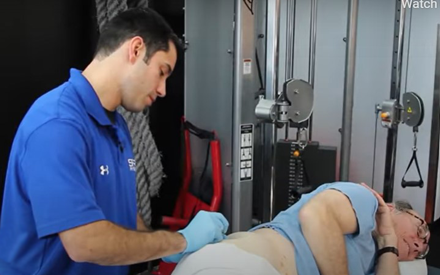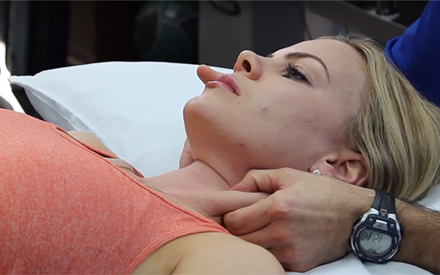Health Center
Dry needling is a technique physical therapists use (where allowed by state law) to treat pain and movement problems. A physical therapist inserts a "dry" needle, without medication or injection, into areas of the muscle.
Other terms used to describe dry needling include trigger point dry needling, and intramuscular manual therapy.
Dry needling can release or inactivate trigger points to relieve pain or improve range of motion. Physical therapists may use dry needling as part of an overall treatment plan.
Physical therapists are movement experts who improve quality of life through hands-on care, patient education, and prescribed movement. You can contact a physical therapist directly for an evaluation. To find a physical therapist in your area, visit Find a PT.
Find a PT Near You
Featured Content


Health Tips
Dry Needling by a Physical Therapist: What You Should Know
Dry needling is a technique that some physical therapists use to treat pain and movement impairments. It is not the same as acupuncture. Learn how physical therapists target pain with dry needling.

Video
Dry Needling by a Physical Therapist
An explanation of dry needling, the conditions it may be used for, and more.

Video
Patient Story: Chelsea (Physical Therapy with Dry Needling)
Patient Chelsea Grimes shares her experience with dry needling by a physical therapist to address chronic headache pain.
Additional Dry Needling Content
Oct 5, 2023 | Open Access
Curious about how physical therapists and physical therapist assistants can help people maintain or restore quality of life? This video explains.
Dec 5, 2018 | Health Tips
Headaches affect 47% of the global population. Many headaches are harmless and resolve gradually. For more frequent moderate to severe headaches, a physical therapist can develop an effective treatment plan.
Sep 30, 2018 | Health Tips
Physical therapy is among the safe and effective alternatives to opioids recommended by CDC for the management of most non-cancer related pain.
Jun 2, 2015 | Open Access
Patient Breaux Castleman talks about his experience with dry needling by a physical therapist to address his pain.
Jan 16, 2014 | Patient Stories
A shoulder replacement didn't solve Pam's problems with pain and limited range of motion. Physical therapist treatment got her back to the things she loves.